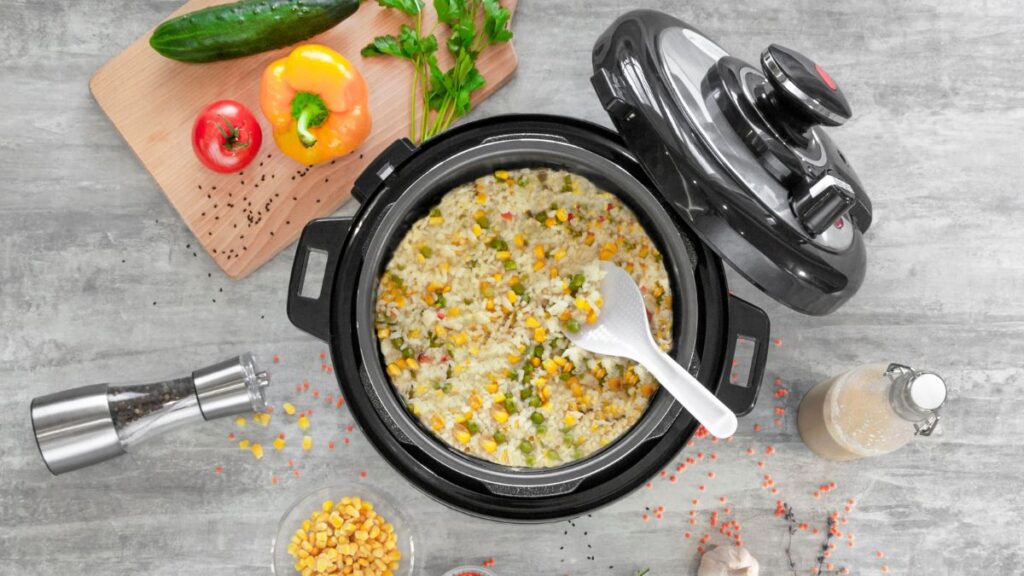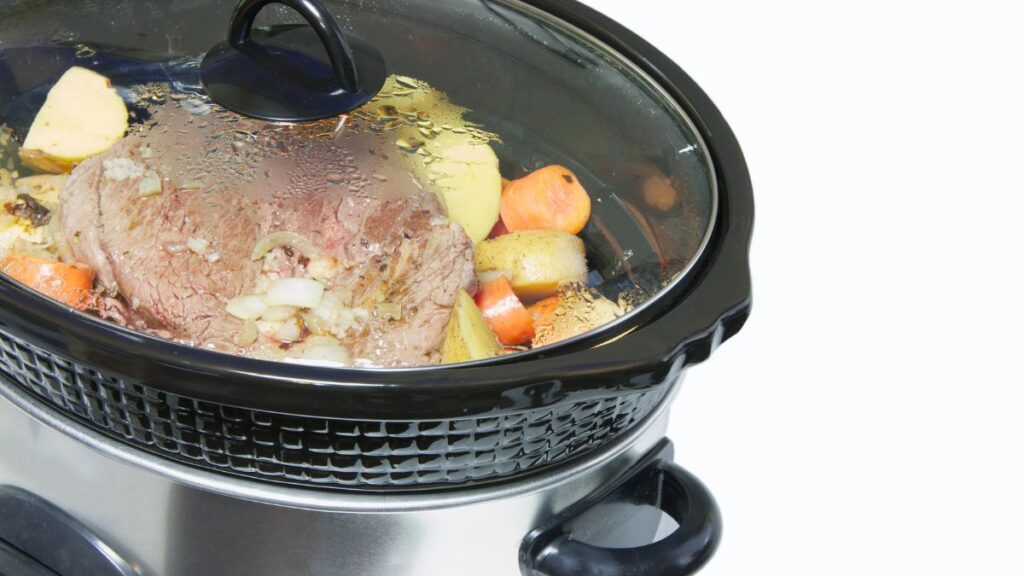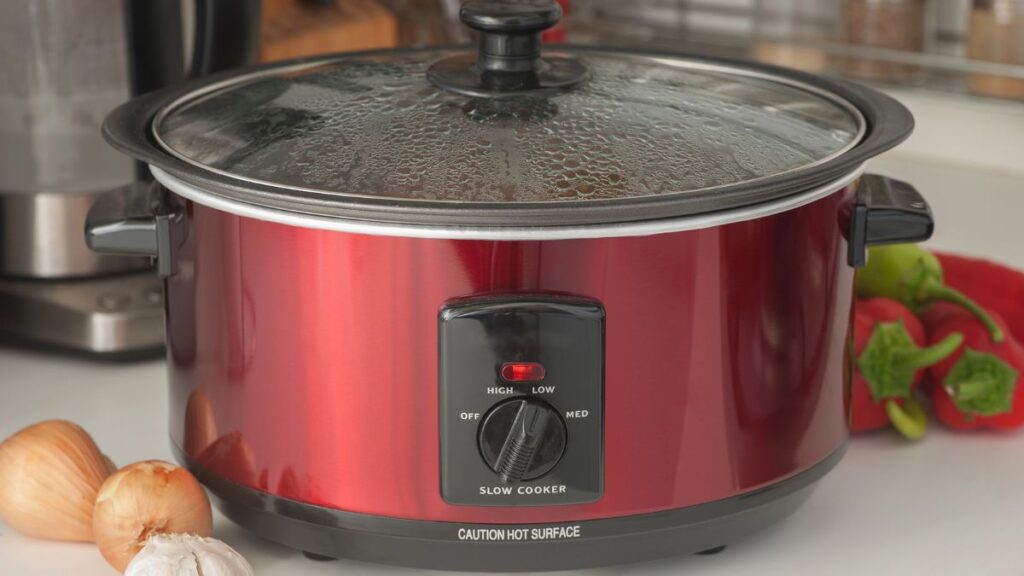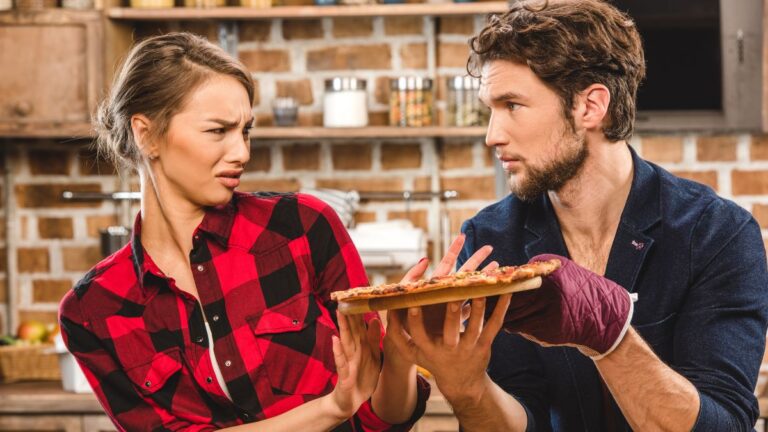15 Common Slow Cooker Mistakes You’re Probably Making
Slow cookers are a lifesaver for busy people, allowing you to prepare delicious meals with minimal effort. You just toss in the ingredients, set the timer, and go about your day while your meal cooks itself.
However, using a slow cooker isn’t always as simple as it seems. Many unknowingly make mistakes that can affect their dishes’ taste, texture, and safety. Here are 15 common slow cooker mistakes you might be making and how to avoid them to get the best results every time.
Not Browning Your Meat First

While it’s tempting to skip the browning step and throw raw meat directly into the slow cooker, this can lead to bland, unappetizing results. Browning your meat before adding it to the slow cooker enhances the flavor and gives your dish a rich, caramelized taste.
The Maillard reaction, which occurs during browning, creates complex flavors that can’t be replicated in a slow cooker alone. Taking a few extra minutes to sear your meat in a hot pan can make a big difference in the overall taste of your meal. Plus, it helps to lock in juices, keeping your meat tender and juicy.
Overfilling the Slow Cooker

Packaging your slow cooker to the brim to maximize its capacity might seem like a good idea, but overfilling can cause problems. When a slow cooker is too full, it can prevent the food from cooking evenly and may even cause it to spill over.
Your slow cooker should be no more than two-thirds to three-quarters full for best results. This allows enough room for the heat to circulate properly, ensuring that your food cooks evenly and thoroughly. Overfilling can also increase cooking time, leading to undercooked meals.
Lifting the Lid Too Often

Checking on your food by lifting the lid is tempting, but doing so can significantly impact the cooking process. Heat escapes every time you lift the lid, and the slow cooker can take a while to regain the lost temperature.
This can add 15-20 minutes to your cooking time each time you lift the lid, which can lead to undercooked or unevenly cooked food. To avoid this mistake, resist the urge to peek inside and trust the process. If you must check on your food, do it quickly and only when necessary, such as near the end of the cooking time.
Using Too Much Liquid

Slow cookers retain moisture very well, so you typically don’t need to add as much liquid as you would in other cooking methods. Adding too much liquid can result in a watery, bland dish with diluted flavors.
Remember that vegetables and meats release moisture as they cook, so start with a smaller amount of liquid and add more if needed. If your dish turns out too watery, you can thicken it by removing the lid during the last 30 minutes of cooking to allow some of the liquid to evaporate. Alternatively, you can stir in a thickening agent like cornstarch or flour.
Using Delicate Ingredients Too Early

Delicate ingredients like fresh herbs, dairy, and quick-cooking vegetables should be added near the end of the cooking time to avoid overcooking. These ingredients can break down and lose their flavor, texture, and color if added too early.
For example, adding dairy products at the beginning can cause them to curdle, while fresh herbs can become bitter if cooked for too long. To preserve the flavor and texture of these ingredients, wait until the last 30 minutes of cooking to add them. This simple step can make a big difference in the quality of your finished dish.
Not Adjusting Cooking Times for Different Ingredients

Different ingredients have different cooking times, and not all of them should be added to the slow cooker at the same time. For instance, root vegetables like carrots and potatoes take longer to cook than softer vegetables like zucchini or spinach.
If you add all your ingredients at once, some may end up overcooked while others are undercooked. To avoid this, layer your ingredients in the slow cooker according to their cooking times, with tougher, slower-cooking ingredients on the bottom and quicker-cooking ones on top. This helps ensure that everything is perfectly cooked by the end.
Using the Wrong Cut of Meat

Not all cuts of meat are suitable for slow cooking. Lean cuts like chicken breasts and pork tenderloin can dry out and become tough when cooked for long periods. On the other hand, tougher cuts like beef chuck, pork shoulder, and lamb shanks are ideal for slow cooking because they have more connective tissue and fat, which break down during the long cooking process, resulting in tender, flavorful meat.
Choosing the right cut of meat is key to achieving the best texture and flavor in your slow-cooked dishes. Don’t be afraid to experiment with different cuts to find your favorite.
Ignoring Food Safety Guidelines

Slow cookers cook food at low temperatures, so it’s important to follow food safety guidelines to avoid foodborne illness. One common mistake is putting frozen meat directly into the slow cooker, which can prevent the food from reaching a safe temperature quickly enough.
Always thaw meat before adding it to the slow cooker, and make sure your slow cooker reaches a temperature of at least 140°F within the first two hours. Using a meat thermometer is also important to ensure your food reaches the proper internal temperature before serving.
Cooking Pasta and Rice in the Slow Cooker

Pasta and rice can become mushy and overcooked if left in the slow cooker for too long. These ingredients are best cooked separately and added to your dish just before serving. If you must cook them in the slow cooker, add them during the last 30-60 minutes of cooking time to prevent them from becoming overly soft.
This way, they’ll retain their texture and won’t absorb too much liquid, which can lead to a bland, unappetizing dish. Cooking them separately also allows you to control their doneness and texture more easily.
Not Layering Your Ingredients Correctly

The way you layer ingredients in your slow cooker can affect how they cook. Dense vegetables like potatoes and carrots should be placed at the bottom of the slow cooker, where they’ll be closer to the heat source and cook more evenly.
Lighter ingredients like meat and softer vegetables can be layered on top. This method ensures that all ingredients cook at the proper rate and prevents some parts of your dish from being undercooked or overcooked. Proper layering also helps to distribute flavors evenly throughout the dish.
Not Using Enough Seasoning

Slow cooking can sometimes mute the flavors of your ingredients, so it’s important to season your dish generously. Don’t be afraid to use more herbs, spices, and seasoning than you would with other cooking methods.
Adding fresh herbs at the end of cooking can also enhance the flavor. You can always adjust the seasoning to taste before serving, but starting with a well-seasoned base ensures your dish will be flavorful from the start. Remember that dried herbs and spices can lose potency during long cooking times, so consider adding a bit more than you normally would.
Cooking on the Wrong Setting

Many slow cookers have different settings, such as low, high, and warm, but using the wrong setting can affect the outcome of your dish. Cooking on high for a shorter period might seem like a good idea to save time, but it can result in tough, overcooked meat and unevenly cooked vegetables.
Low and slow is often the best approach, as it allows flavors to develop and ingredients to cook evenly. To achieve the best results, follow the recipe’s recommended cooking time and setting. If you’re in a hurry, consider using a pressure cooker instead.
Not Stirring When Needed

While leaving your slow cooker alone is generally best, some dishes benefit from an occasional stir. If your recipe contains ingredients that stick to the sides or clump together, such as beans or grains, stirring once or twice during cooking can help prevent this.
However, avoid over-stirring, as it can disrupt the cooking process and release heat, prolonging the cooking time. Stirring is especially important when cooking soups, stews, and chili to ensure that all ingredients are evenly distributed and cooked. Just be sure to replace the lid quickly to minimize heat loss.
Leaving the Food in the Cooker Too Long After It’s Done

Once your food is done cooking, it’s important to transfer it out of the slow cooker or switch the cooker to the “warm” setting. Leaving food in the slow cooker on the “low” or “high” setting can overcook it, leading to dry or mushy textures.
If your slow cooker doesn’t have a “warm” setting, remove the food and store it in an airtight container. Food safety is also a concern—keeping food at a safe temperature prevents the growth of harmful bacteria. Enjoy your meal as soon as it’s done or store it properly for later.
Not Cleaning Your Slow Cooker Properly

Over time, leftover food particles and grease can build up in your slow cooker, affecting the taste and safety of your meals. It’s important to clean your slow cooker thoroughly after each use to prevent bacteria buildup and maintain its performance.
Some slow cookers have removable inserts that are dishwasher safe, making cleanup easier. If your slow cooker isn’t dishwasher safe, soak it in warm, soapy water and use a non-abrasive sponge to clean it. Regular cleaning ensures that your slow cooker remains in good condition and ready for your next meal.
Eating Right With Type 2 Diabetes: Stay Away From These 15 Foods

Managing type 2 diabetes involves making careful food choices to keep your blood sugar levels stable. Some foods can cause your blood sugar to spike, making it harder to manage your diabetes.
Eating Right With Type 2 Diabetes: Stay Away From These 15 Foods
15 Foods That Are Becoming Too Expensive To Buy Due To Skyrocketing Prices

Food costs have been steadily rising in recent years, impacting households worldwide. Various factors, such as climate change, supply chain disruptions, and increased demand, have contributed to the soaring prices of many staple foods.
15 Foods That Are Becoming Too Expensive To Buy Due To Skyrocketing Prices







